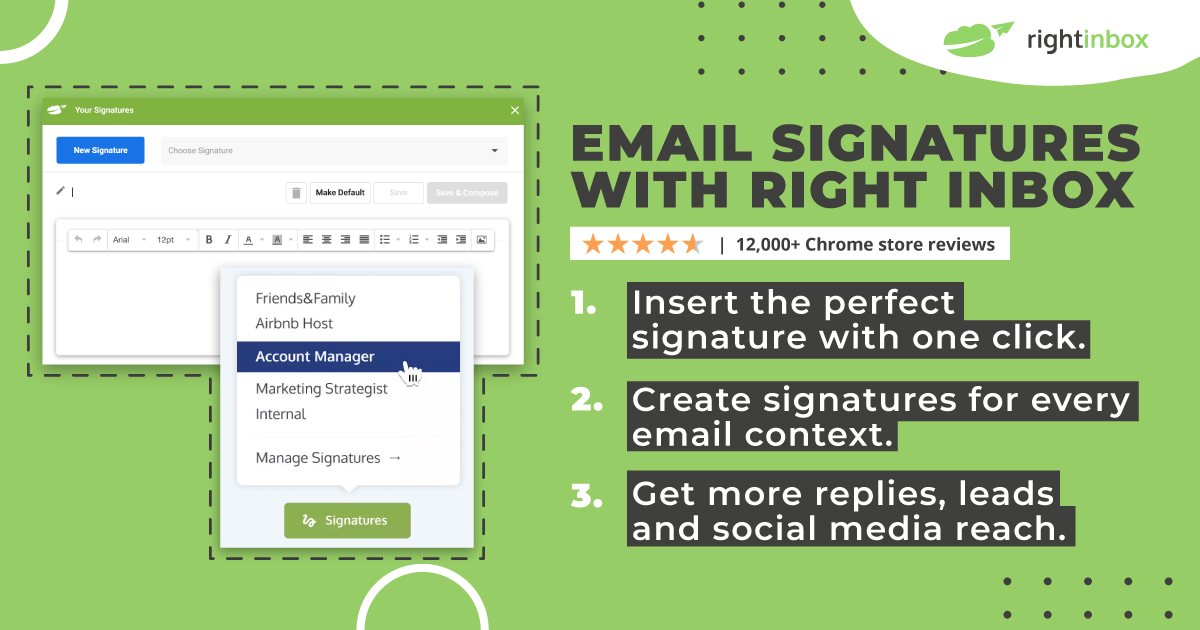In an equal and diverse workplace, each and every colleague must feel respected and valued. For transgender, genderqueer, and non-binary employees, among others, colleagues using their correct pronouns is vital to their happiness in the workplace – and overall.
There are many ways employers can support this, from asking what every new hire’s pronouns are on day one of their employment, to building an LGBTQIA+ network to ensure people with diverse gender identities are heard in the workplace.
While a low-effort task, including gender pronouns in email signatures is a great place to start when it comes to supporting and including your transgender and non-binary staff.
In this guide, we’ll explain why pronouns are important, outline the most common pronouns, and underline why and how they should be included in email signatures.
Why Are Pronouns Important?
Traditionally, society has taught us to make assumptions around gender based on someone’s name or the way they look. However, a person’s gender identity (the way they identify internally) doesn’t always match up with their gender expression (the way they look). Furthermore, not everyone identifies as either male or female.
If you’ve never had to worry about being misgendered – when someone uses the wrong pronoun to refer to you – gender pronouns may not seem particularly important. Yet everybody has a gender identity and associated pronouns they use – most cisgender (non-trans) people simply have the priviledge of rarely or never being misgendered.
However, for many people, including transgender and non-binary people, this is of constant concern. When a person is misgendered, they may at best feel like the person addressing them is ignorant or lacking in awareness, and at worst, they may feel invalidated, alienated, and upset.
In order to foster a truly equal and diverse workplace, it’s essential that each and every employee feel respected and valued. Using the correct pronoun to refer to all employees should be standard practice.
It’s also important to remember that people do not have “preferred” pronouns – they simply have pronouns. Using the outdated “preferred” term implies that an individual’s gender is simply a preference rather than an intrinsic part of their identity.
Pronouns Explained
Generally speaking, a pronoun is a word that takes the place of any noun, while gender pronouns most commonly refers to “he,” “she,” or “they.”
- “She,” “her,” and “hers” are commonly used for someone who identifies as female
- “He,” “him,” and “his” are commonly used for someone who identifies as male
- “They,” “them,” and “their,” are commonly used for someone who identifies as neither male or female.
However, these are by no means the only sets of gender pronouns. Some people, for example, will use their name in place of pronouns. This means it’s much easier and more effective to simply ask people which pronouns they should use – or better yet, normalize the practice of inserting gender pronouns into email signatures and eliminate the guesswork.

Why Include Gender Pronouns in Email Signatures?
If you’re comfortable with sharing your own pronouns, adding them to your email signature is a simple but effective way to normalize the practice. It will also help many colleagues and contacts with diverse gender identities and gender expressions feel included and confident in including their own pronouns within their email signatures.
Even if they don’t feel comfortable adding their own pronouns into their signature, including your own is a small way to help them feel more comfortable in the workplace.
Furthermore, including your own pronouns will remind recipients that they should not make assumptions around gender identity.
How to Include Gender Pronouns in Email Signatures
It’s simple to add gender pronouns to an email signature. Simply add in a line under your name, to the end of your name, or at the end of the signature that states “Pronouns: [insert pronouns here].”
With so much communications taking place over email, it can be challenging to keep our inboxes under control. That’s why we created Right Inbox – a simple plugin that can help you spend less time in your inbox and more time being productive. Need multiple email signatures on one Gmail account? Right Inbox has you covered, allowing you to switch between email signatures quickly.

Take Your Support a Step Further
Including gender pronouns in your email signature is a small but significant step towards diversity and inclusion within your workplace. But don’t leave it there: ensure that respect for your transgender, non-binary, and gender diverse employees – and their pronouns – is authentically built into the core of your company.
Adding Pronouns with Right Inbox’s Email Signature
Right Inbox’s Gmail Email Signature feature makes email signatures easy to manage and automate. Using Right Inbox, you can achieve more engagement with your emails by creating the perfect sign-off for every client or occasion.
Don’t worry about recreating your signature from scratch every time. Simply write your email and insert your desired signature with one click. Right Inbox allows you to insert your preferred pronouns (or leave them out) in your email signature.
You can even create several signatures that are more suitable for each context. For instance, you may wish to identify your pronouns internally with your colleagues while not sharing your pronouns to external recipients — All of which is a breeze when you use Right Inbox.
Pronouns Email Signature Frequently Asked Questions (FAQ)
Can you add an email signature in Gmail?
Yes, luckily Gmail allows you to create an email signature. You can place your contact information, links to other websites, and even images in your signature.
How can I change my Gmail email signature?
Naturally, some of your information may change over time, such as your phone number. If you install Right Inbox, you can change your signature as often as you like in just a few clicks.
Can I have different email signatures?
Absolutely. One of the most convenient reasons that users love Right Inbox is the ability to have multiple signatures. You may want unique signatures for different recipients such as professional colleagues, clients, and family members.
Should I use an email signature?
Most people can benefit from an email signature. Using an app like Right Inbox lets you express your personality while also appearing more professional in your emails. Create unique logos, links, and other information to display in your Gmail signature.
Why should you include pronouns in your email signature?
By including pronouns in your email signature, you can demonstrate your support for diversity and inclusion. It may make LGBTQIA+ people in your workplace and general network feel more appreciated and heard.
Why should you not include pronouns in your email signature?
If you are not comfortable sharing your gender pronouns publicly, then you shouldn’t include them in your email signature. Furthermore, if you are uncertain about which gender pronouns you prefer, you may want to take more time before putting them in your signature.
Don’t underestimate the power of an email signature. You can communicate more about yourself and your company with ease, every single time. However, dealing with signatures can sometimes be a hassle. For the best use of your time, use tools like Right Inbox. That way you can create, manage, and edit your email signatures in Gmail quickly and easily.
Track emails, email reminders & templates in Gmail for free
Upgrade Gmail with the features it’s missing
Add to GmailDavid Campbell
David Campbell is the editor of the Right Inbox blog. He is passionate about email productivity and getting more done in less time.




